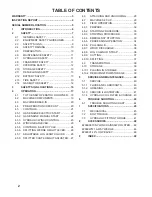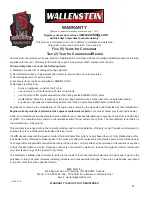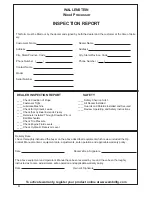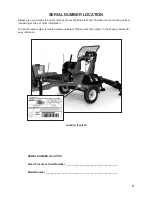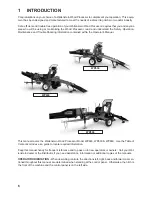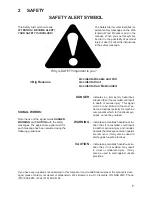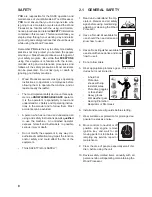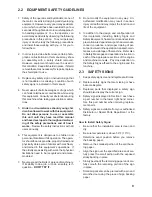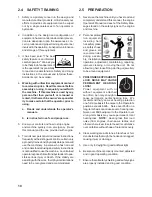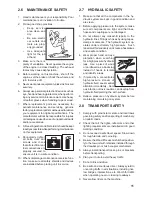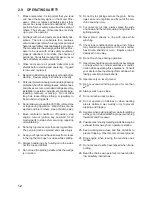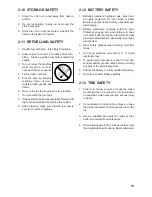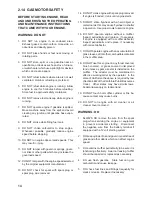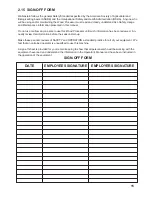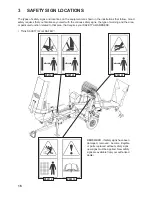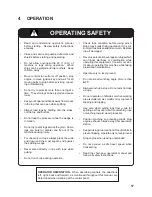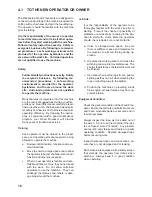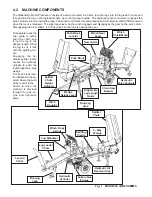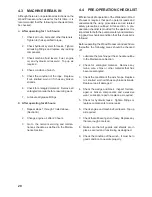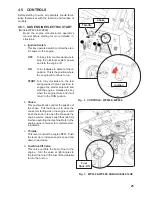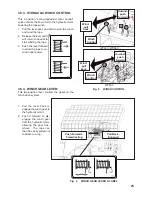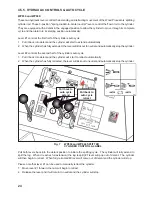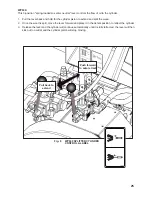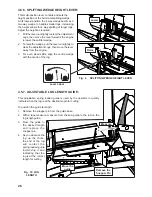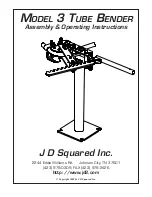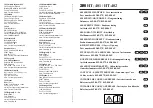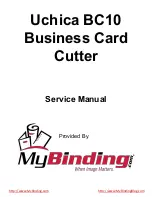
11
2.6 MAINTENANCE SAFETY
1. Good maintenance is your responsibility. Poor
maintenance is an invitation to trouble.
2. Follow good shop practices.
• Keep service
area clean and
dry.
• Be sure electri-
cal outlets and
tools are prop-
erly grounded.
• Use adequate
light for the job
at hand.
3. Make sure there is
plenty of ventilation. Never operate the engine
of the engine in a closed building. The exhaust
fumes may cause asphyxiation.
4. Before working on this machine, shut off the
engine, set the brake or chock the wheels, and
turn fuel valve off.
5. Never work under equipment unless it is blocked
securely.
6. Always use personal protection devices such as
eye, hand and hearing protectors, when perform-
ing any service or maintenance work. Use heavy
or leather gloves when handling rope or wood.
7. Where replacement parts are necessary for
periodic maintenance and servicing, genuine
factory replacement parts must be used to restore
your equipment to original specifications. The
manufacturer will not be responsible for injuries
or damages caused by use of unapproved parts
and/or accessories.
8.
A fire extinguisher and first aid kit should be kept
readily accessible while performing maintenance
on this equipment.
9. Periodically tighten
all bolts, nuts and
screws and check
that all electrical and
fuel connections are
properly secured to
ensure unit is in a safe condition.
10. When completing a maintenance or service func-
tion, make sure all safety shields and devices
are installed before placing unit in service.
2.7 HYDRAULIC SAFETY
1. Make sure that all the components in the hy-
draulic system are kept in good condition and
are clean.
2. Before applying pressure to the system, make
sure all components are tight, and that lines,
hoses and couplings are not damaged.
3. Do not attempt any makeshift repairs to the
hydraulic lines, fittings or hoses by using tapes,
clamps or cements. The hydraulic system op-
erates under extremely high pressure. Such
repairs will fail suddenly and create a hazardous
and unsafe condition.
4. Wear proper hand and eye
protection when searching
for a high pressure hydraulic
leak. Use a piece of wood
or cardboard as a backstop
instead of hands to isolate
and identify a leak.
5. If injured by a concentrated
high-pressure stream of
hydraulic fluid, seek medical
attention immediately. Seri-
ous infection or toxic reaction can develop from
hydraulic fluid piercing the skin surface.
6. Relieve pressure on hydraulic system before
maintaining or working on system.
2.8 TRANSPORT SAFETY
1. Comply with provincial or state and local laws
governing safety and transporting of machinery
on public roads.
2.
Check that all the lights, reflectors and other
lighting requirements are installed and in good
working condition.
3. Do not exceed a safe travel speed. Slow down
for rough terrain and cornering.
4. Be sure the Wood Processor is hitched positive-
ly to the tow unit with retainers installed through
the drawbar pin or hitch coupler mechanism.
5. Always install transport locks, pins or brackets
before transporting.
6.
Plan your route to avoid heavy traffic.
7. Do not drink and drive.
8. Be a safe and courteous driver. Always yield to
oncoming traffic in all situations, including nar
-
row bridges, intersections, etc. Watch for traffic
when operating near or crossing roadways.
9. Never allow riders on the machine.


